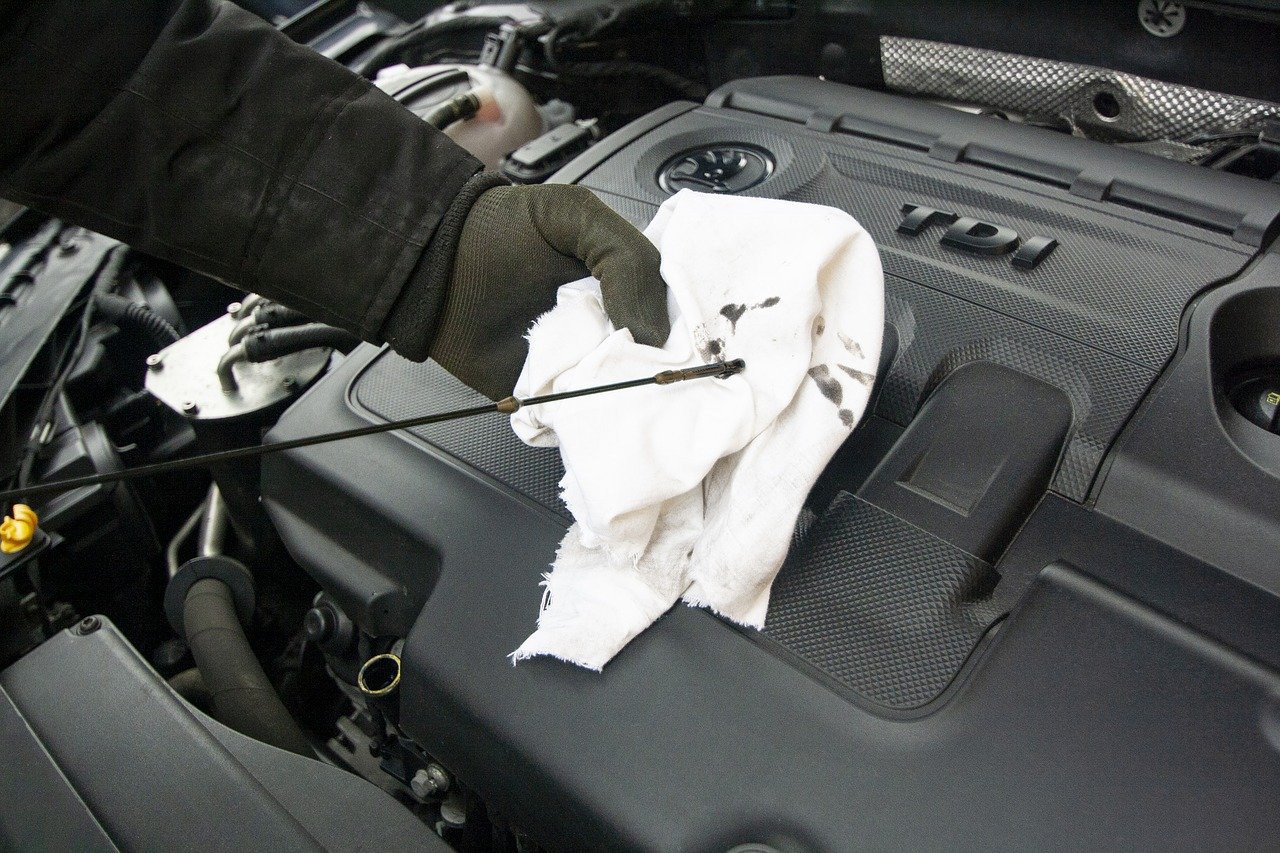How Much Motor Oil to Put in Car. The amount of motor oil to put in a car typically ranges from 4 to 6 quarts. Check your vehicle’s owner’s manual for the exact amount required.
Ensuring your car has the right amount of motor oil is crucial for its performance and longevity. The engine’s lifeblood, motor oil, keeps moving parts lubricated, reducing friction and preventing damage. Every car model has specific oil capacity needs, and overfilling or underfilling can lead to issues.
Vehicle manuals provide the precise oil volume for your engine, and it’s important not to deviate from these recommendations. For those who prefer a professional touch, mechanics can also advise on the correct oil volume during a service appointment. Remember, regular oil checks and changes are key to maintaining your car’s health and efficiency. Keep tabs on oil levels between changes, as this can indicate leaks or consumption issues. Trustworthy vehicle maintenance ensures safe and smooth travels.
Introduction To Motor Oil Importance
Motor oil is like blood for your car’s engine. It keeps it running smoothly. Without it, your car won’t work well. It’s important to use the right amount.
Role Of Motor Oil
- Lubricates engine parts
- Reduces wear and tear
- Helps cool the engine
- Cleans the engine from harmful substances
Consequences Of Incorrect Oil Levels
Putting too much or too little oil in your car is bad. Here’s why:
| Too Much Oil | Too Little Oil |
|---|---|
| Can harm engine parts | Increases wear and tear |
| May cause leaks | Can lead to engine overheating |
| Can increase oil pressure | May result in engine failure |

Credit: www.jdpower.com
Determining The Right Amount Of Oil
Determining the Right Amount of Oil is crucial for your car’s health. Too little or too much oil can harm your car. This section will guide you on finding the perfect oil amount for your vehicle.
Oil Capacity Specifications
Every car needs a specific amount of oil. This amount is called the oil capacity. It varies by car model and make.
Checking The Owner’s Manual
Your car’s manual has the oil capacity listed. Look for the section titled “Maintenance” or “Specifications.” Here, you will find how much oil your car needs. The manual will list the oil type and capacity. For example, it might say “Engine Oil – 4.5 liters.” This means your car’s engine needs 4.5 liters of oil.
If you can’t find your manual, check online. Most car manufacturers have manuals on their websites. You can also ask at a car service center. They can tell you the right oil amount.
Remember, using the right oil amount keeps your car running smoothly. It helps your engine work well. Check your oil level regularly. This will help your car last longer.
Tools And Materials Needed
Knowing what tools and materials you need is key. It makes the job smooth. Let’s dive into what you need for an oil change.
Choosing The Right Oil
Different cars need different oils. The manual tells you which one. Look for these things:
- Viscosity: It’s how thick the oil is. Your car manual shows the right one.
- Type: Options include synthetic, conventional, and blends. The manual guides you.
- Brands: Pick a trusted brand. Good brands protect your engine better.
Necessary Equipment For Oil Change
Changing oil needs certain tools. Here’s a list:
| Tool/Equipment | Use |
|---|---|
| Wrench | Opens the oil drain plug. |
| Oil Drain Pan | Catches old oil. |
| Funnel | Helps pour new oil without spills. |
| Gloves | Keeps hands clean. |
| Rags | Cleans spills. |
| Jack and Jack Stands | Lifts the car safely. |
| New Oil Filter | Replaces old filter. |
With the right oil and tools, you’re set. Changing oil becomes easy.
Step-by-step Guide To Measuring Oil
Let’s learn how to measure car oil in easy steps.
Warming Up The Engine
First, make sure your car engine is warm. Drive for 5 minutes.
Turn off your engine. Wait for 2 minutes.
Locating The Dipstick
Open your car’s hood. Find the dipstick. It has a loop or handle.
Pull the dipstick out. Clean it with a rag. Put it back in fully.
Reading The Oil Level
Remove the dipstick again. Look at both sides to see the oil mark.
- If the oil is between two marks, your level is good.
- If below the bottom mark, you need more oil.
After checking, put the dipstick back in place.
Adding Oil To Your Car
Maintaining proper oil levels is crucial for your car’s health. Adding oil to your engine safeguards it from damage. It’s a simple process that you can do at home.
Pouring Technique
Start with the right type of oil for your car. Check the owner’s manual for the recommended grade. Gather a funnel, gloves, and the oil.
- Turn off the car and wait for the engine to cool.
- Open the hood and find the oil cap.
- Remove the cap and place the funnel in the opening.
- Slowly pour oil, avoiding overfilling.
- Replace the oil cap securely.
Rechecking Oil Level
After adding oil, it’s important to check the level again. This ensures your engine has enough oil.
- Wait a few minutes for the oil to settle.
- Remove the dipstick and wipe it clean.
- Insert the dipstick back in, then remove to check the level.
- The oil should be between the min and max marks.
- If necessary, add more oil and check again.

Engine oil capacity chart
An engine oil capacity chart typically lists the oil capacity specifications for various makes and models of vehicles. This information is crucial for vehicle maintenance and ensuring the engine is properly lubricated.
| Make | Model | Year | Engine | Oil Capacity |
| Toyota | Camry | 2024 | 2.5L 4-cylinder | 4.8 quarts |
| Honda | Accord | 2024 | 1.5L 4-cylinder | 3.7 quarts |
| Ford | F-150 | 2024 | 3.5L V6 EcoBoost | 6.0 quarts |
| Chevrolet | Silverado | 2024 | 5.3L V8 | 8.0 quarts |
| BMW | 3 Series | 2024 | 2.0L 4-cylinder Turbo | 5.5 quarts |
| Audi | A4 | 2024 | 2.0L 4-cylinder Turbo | 5.2 quarts |
| Mercedes | C-Class | 2024 | 2.0L 4-cylinder Turbo | 6.9 quarts |
| Nissan | Altima | 2024 | 2.5L 4-cylinder | 5.0 quarts |
| Subaru | Outback | 2024 | 2.5L 4-cylinder Boxer | 4.7 quarts |
| Jeep | Grand Cherokee | 2024 | 3.6L V6 | 6.0 quarts |
Common Mistakes To Avoid
Knowing the right amount of motor oil is vital for your car. Too much or too little can cause issues. Let’s explore common errors to steer clear of.
Overfilling Risks
Adding too much oil to your engine can harm it. Here are risks linked with overfilling:
- Foaming: Excess oil causes foaming. This reduces lubrication efficiency.
- Pressure: Overfill increases pressure. This leads to oil leaks.
- Damage: Parts like gaskets and seals may fail.
- Performance: Too much oil affects performance. It can cause higher fuel consumption.
Underfilling Issues
Not putting enough oil is also bad. Below are problems from underfilling:
- Wear: Less oil means more friction. This accelerates engine wear.
- Heat: Oil cools parts. Low levels can’t remove heat well.
- Damage: Critical parts could get damaged. This leads to costly repairs.
- Lifespan: Underfilling can shorten your engine’s life.

Credit: www.autozone.com
Frequently Asked Questions
How Much Engine Oil Should I Put In My Car?
Check your car’s owner manual for the exact oil capacity. Typically, engines take between 5 to 8 quarts. Always use a dipstick to confirm the level.
How Much Oil Do I Need To Fill My Car?
The amount of oil needed to fill a car’s engine varies by model, but typically ranges from 4 to 6 quarts. Always check your owner’s manual for the exact specification.
How Do You Know How Much Oil To Put In Your Car?
Check your car’s owner’s manual for the recommended oil capacity. Use the dipstick to gauge the current level and add oil gradually, checking frequently to avoid overfilling.
How Much Oil Do I Put In My Car If Its Low?
Check your car’s owner manual for the specific amount, typically ranging from one quart for a slight dip to two quarts when extremely low. Always verify the level with the dipstick after adding oil.
Conclusion
Determining the right amount of motor oil for your car is crucial. Always consult your owner’s manual for the exact specifications. Remember, maintaining the correct oil level ensures your engine’s longevity and performance. For any uncertainties, seek professional advice to keep your vehicle running smoothly.
Drive safely and responsibly with well-maintained oil levels.
